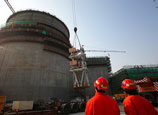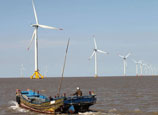
"The 2 billion (yuan) amount is not so big. But what is big is that the government for the first time is taking a hand-off approach and allowing lenders and borrowers to make their deals," said Wang Jianhui, chief economist with Southwest Securities Co Ltd.
The one-year lending rate is around 6 percent at the onshore market and 4 percent in Hong Kong, giving Hong Kong lenders an edge over their mainland counterparts. But Wang shrugged off worries that opening a channel would reduce the pool of yuan deposits in Hong Kong.
"The move is only a test and under government control. I don't see the scenario where yuan deposits in Hong Kong shrink very fast in a short time," he said
Latest data from the Hong Kong Monetary Authority show that yuan deposits in Hong Kong has reached 603 billion yuan at the end of 2012.
As the loans come from Hong Kong, the move is a test of further capital accounts opening by allowing offshore funds to be transferred to the mainland.
Previously, offshore yuan could flow back to the mainland only through yuan-denominated trade and renminbi qualified foreign institutional investors.
"Cross-border yuan loans are an important step in Qianhai's exploration of the offshore yuan's flow-back mechanism and marks a milestone in the 'go-out' of the currency," said Lin Qingde, CEO & executive vice-chairman of Standard Chartered Bank (China) Ltd in a statement.
He added that the yuan is marching gradually and steadily toward becoming a global currency, and he expects more breakthroughs on that front this year.
Oliver Chiu, head of research and investment advisory in the wealth management unit of Citibank (China), said that more backflow channels of offshore yuan will increase deposit rates for yuan and the willingness among individuals and companies to hold the currency.
"Once a stable backflow mechanism is formed, the central bank won't need to reply on purchasing foreign exchanges to guarantee money supply into the market," he said.

















 'Joint effort' urged to clear the air
'Joint effort' urged to clear the air


![]()
